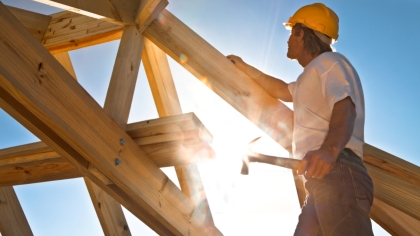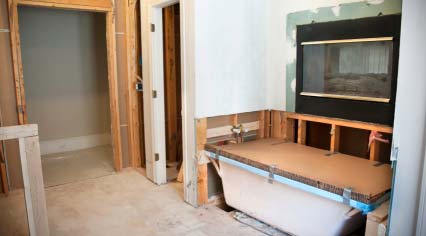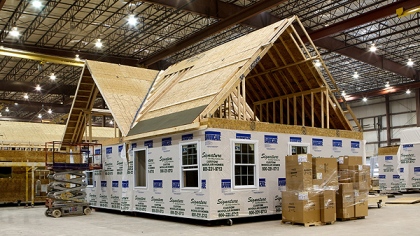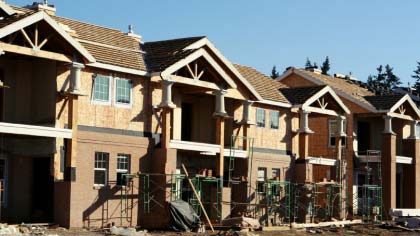Owner Builder Construction Loans

Owner Builder Loans In Brieff
- Owner-builder loans allow individuals to manage and oversee the construction process themselves, resulting in potential cost savings and increased equity in the property.
- The main difficulties faced by owner-builders include managing project timelines, coordinating with subcontractors, and ensuring compliance with building codes and regulations.
- When deciding on financing options for owner-builder construction, it's important to carefully analyze the pros and cons of each option, as well as one's ability to handle the responsibilities of managing the construction process.
The Basics of Construction Loans
What is a Construction Loan?
A
Construction Loan is a type of loan used to cover the costs of building a new house or renovation project. These loans are typically short-term and are paid off or converted into a permanent mortgage once the project is complete.
With Equity-Based Programs offered by hard money construction lenders, you can finance your dream project faster and more efficiently without getting bogged down with paperwork.
Differences Between Construction Loans and Traditional Mortgages
Several differences exist between a Home Construction loan and a traditional mortgage loan. While a mortgage is used to purchase an existing property, a construction loan is used to finance the building of a new property. Additionally, a construction loan's payment structure differs from a traditional mortgage. Instead of making regular monthly payments, borrowers typically pay interest only on the amount drawn during the construction period.
How Do Construction Loans Work?
These loans work differently from traditional mortgages. Instead of receiving the full loan amount upfront, you receive draws or partial disbursements as the work progresses. You only pay interest on the amount drawn. Once completed, the loan is either paid off or converted into a permanent mortgage.
Interest Rates, Terms and Requirements for Construction Loans
The interest rates for Construction Loans can either be fixed or adjustable. However, you must provide detailed specifications for the project, a proposed budget, and a timeline.
Maximum loan amounts for one-time close construction loans may be limited to Fannie Mae and Freddie Mac loan limits for lower cost rates and fees and slightly higher for jumbo loans. You must also have a good credit score and a reasonable debt-to-income ratio. The construction period will be limited to 12 to 18 months, while the take-out could be for 30 or 15 years.
Deep Dive Into Owner Builder Loan

What is an Owner-Builder?
An individual who takes on the role of the general contractor to build their own dream home. Instead of hiring a general contractor to oversee the project. This can include tasks such as:
- Obtaining architectural and engineering plans.
- Choosing subcontractors and obtaining bids.
- Completing a line item cost breakdown.
- Applying for and obtaining building permits.
- Overseeing the process.
- Planning: Detailed planning is crucial to a successful project.
- Costing: Accurate cost estimates are essential to staying within budget.
- Budgeting: A realistic budget is key to managing the costs.
- Training: You should consider taking a course to learn about the construction process and its responsibilities.
- Financing: Securing financing is a critical step in the process.
- HELOCs are Credit Lines based on the existing value of the house and are approved for up to a certain Loan to Value. Interest is charged on the amount of loan drawn from the line.
- Home Equity Loans are also made based on your equity, but they are paid to the borrower in lump sums, and interest is charged on the entire amount.
- Prequalification involves: A preliminary assessment of your financial situation to determine how much you can borrow.
- Loan application: You must complete a loan application and provide documentation of your income, assets, and debts.
- Approval: The lender will review your application and decide whether to approve your loan.
Allow individuals to act as their own general contractors and save money on fees.
This means assuming responsibility for hiring subcontractors, managing the budget, and overseeing construction phases.
It can be more difficult to obtain than traditional construction loans due to the risk involved with inexperienced builders.
There are three options: hiring a general contractor, an on-site project manager, or a construction management company.
Despite the challenges, this can be the most profitable route as it allows for greater control over the home's materials, subcontracts, and potential equity.
Completing a line item cost breakdown is a critical stage of establishing your budget; see this example here, though your lender may have their own version.
There will be differences from state to state, but you can check here for the basic requirements for acting as an owner builder.
Most lenders who offer construction loans will also allow an applicant to act as an owner-builder but will have some guidelines and requirements, such as; previous experience or some other form of demonstrating the ability to manage the process.
How Banks Fund Owner Builder-Loans
Banks fund these loans by disbursing funds in stages as the project progresses. Disbursements are called draws and are made according to a pre-determined schedule. It is important to appreciate that draws reimburse expenses incurred, not advances.
You are only charged for the amount drawn at any one time, which may be applied to an interest reserve account if one is set up.
Important Steps of the Process:
Options for a Remodel Loan That's Limited in Scope

If the scope of the work is somewhat limited and there's enough equity in your home, then the entire concept changes. A home equity line of credit, HELOC, or a home equity loan can be used instead.
The main differences between the two:
Here's a comparison of Construction Loans, Home Equity Lines of Credit (HELOCs), and Home Equity Loans:
| Construction Loan | Home Equity Line of Credit (HELOC) | Home Equity Loan | |
|---|---|---|---|
| Pros | 1. Specifically designed for building or major renovations. 2. Interest is only paid on the amount drawn. 3. Funds are disbursed in stages as construction progresses, which can help manage costs. 4. Allows for the creation of a home that suits your specific needs. 5. Based on the Future Value of the home which could be much higher that the present value |
1. Flexibility to borrow as much or as little as needed. 2. Interest rates are usually variable, but may be lower compared to other options. 3. Interest may be tax deductible if used for home improvements. 4. Ability to reuse the credit line as you pay it off. |
1. Fixed interest rate, which can make budgeting easier. 2. Lump sum payout can be beneficial for large, immediate expenses. 3. Interest may be tax deductible if used for home improvements. 4. Generally faster approval and funding process than a construction loan. |
| Cons | 1. Higher interest rates compared to other options. 2. More complex process with more requirements. 3. Risk of overruns or construction not being completed. 4. Requires refinancing into a traditional mortgage after construction. If not a sigle close loan. Risk of losing your home if you fail to repay, |
1. Variable interest rates can lead to unpredictable payments. 2. The temptation to overspend due to revolving credit. 3. May require annual fees or charges. 4. Risk of losing your home if you fail to repay, as the house is used as collateral. |
1. Fixed payment schedule can be inflexible. 2. Higher interest rates than a HELOC. 3. Closing costs and fees may be higher than a HELOC. 4. Risk of losing your home if you fail to repay, as the house is used as collateral. |
Please note that the specific terms, rates, and conditions of these financing options can vary widely between different financial institutions and individual borrowers, so it's important to carefully consider your own financial situation and consult with a financial advisor before making a decision.
Applying for a Construction Loan

Steps to Get a Construction Loan
Getting a Construction Loan involves several steps:
Appling for an owner builder loan
To qualify for an owner builder construction loan is no different than qualifying for a mortgage; both documented income and stated income programs are offered.
One significant difference between when qualifying for a construction loan as opposed to a purchase money or refinance mortgage is the fact that you will have to qualify for both your present housing expense and the construction loan payments.
Qualifying may become simpler if the loan program offers an interest reserve account that takes care of the payments during construction.
Learn more about qualifying for a construction loan by visiting FNMA's guidelines.
Five Facts About Owner Builder Construction Loans:
Frequently Asked Questions
No, your time spent managing the project will be your labor of love and could potentially save a significant amount of money.
Yes, you can use the funds for both hardscaping and softscaping; in some cities, final permits will not be issued unless landscaping is done.






